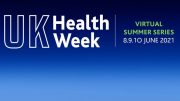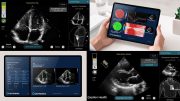As hospitals across the United States faced a surge in flu, RSV and COVID-19 cases, the “tripledemic” pushed capacity to the brink. As the threat fades, hospitals are rethinking their approach to nurse triage to protect quality of care and help patients quickly get the attention they need. Dusti Browning, MSN, RN, NE-BC, is Vice President of Growth and Client Solutions for Conduit Health Partners, which partners with employers, health plans, physician practices, and health systems to provide a 24/7 nurse-first model where callers have immediate, timely access to a registered nurse. Browning shares the lessons we’re learning and what leading hospitals nationwide are doing to be ready before the next crisis.
-
Health care’s “tripledemic” highlighted weaknesses in health care’s ability to handle surges of patients. What role does nurse triage play in preventing unnecessary emergency department visits and supporting health care value?
Challenges with patient triaging and transfer existed long before the “tripledemic,” a period where we’ve seen volumes of COVID-19, RSV and influenza cases rise dramatically. However, the tripledemic intensified the strain on health care resources at a time when health care workforce shortages around the globe are threatening access to care, quality of care and patient safety. This makes it more important than ever that we leverage nurse-based triage services.
Nurse triage can lift the load for overburdened emergency department teams by bringing an awareness of the care needed and the best location to receive that care.. It helps direct patients with non-emergent needs to other care settings, such as primary care, convenience clinics or urgent care centers, and provides compassionate reassurance and advice when a health issue does not require immediate treatment. When emergency care is needed, the nurse who triages the patient—whether virtually or by phone— may contact the emergency department prior to the patient’s arrival to prepare the team for the patient, streamlining access to appropriate care.
We saw the impact of nurse triage recently when a patient feared she was having a heart attack on the way to the hospital ED. The patient connected with a nurse through a triage service as she drove to the ED, describing her symptoms. The nurse recognized that this was an emergency. As the patient drove, the nurse stayed on the line while contacting the hospital, making sure an emergency team was ready to provide swift care upon the woman’s arrival. It’s an instance where a direct connection to clinical expertise—without going through an answering service or being asked to leave a voicemail for assistance—can save lives.
-
What are some of the lessons we’re learning during the tripledemic about ways to optimize triage?
One lesson we’re learning is that establishing a registered nurse as the first point of contact for patient triage is a critical driver of patient satisfaction. Many patient triage solutions connect patients to a call center agent or even voicemail at the point of contact. At Conduit, we believe a nurse first-triage line—available 24/7— supports optimal utilization of care resources, including for urgent care and emergency care. By involving a registered nurse in these conversations from the start, the assessment can be completed timely preventing a delay in care. The nurse will offer recommendations for care in the most appropriate setting for the situation at hand. They also can provide immediate evidence-based care advice to patients and caregivers optimizing caller experience, increasing the odds that the patient will rely on this service again.
Research shows that individuals with chronic conditions or social determinants of health are less likely to forego care and intervention and demonstrate significant improvement in quality of life when a nurse triage program is available. This reduces the chances that a patient’s condition will deteriorate while waiting for care. It also decreases the need for hospitalization.
-
The tripledemic also underscored opportunities to optimize patient flow in and out of a hospital system. Could you talk about this a bit?
This past December, when the impact of the tripledemic pushed hospital capacity to the brink, some U.S. hospitals were forced to set up triaging tents in hospital parking lots to handle the overflow. A high level of boarding in hospital EDs was common because coordinating a patient transfer is complex work. It can take multiple calls to find the right fit for the patient, which further strains ED resources. At one Oregon health system, when patients required a higher level of care than their facility could provide, they often waited more than two days for a transfer.
Scenarios like these occur most often when patient transfer processes and procedures are disorganized, inconsistent, repetitive or unclear. When processes for patient transfer are inefficient, they negatively affect other aspects of the patient experience and create an opportunity for patient harm. They also result in lower rates of staff satisfaction and delayed throughput and have a detrimental effect on a hospital’s bottom line.
Most hospitals don’t have the in-house resources, operational capacity or expertise to implement effective transfer processes on their own. As a result, hospitals have begun to explore partnerships with organizations such as Conduit to establish a customized patient transfer center model. In doing so, they create a mechanism for conserving staff resources while increasing their ability to accept or transfer patients.
-
What are the lessons health systems are learning about ways to improve patient flow?
We’re learning that nurse-driven patient transfer centers—established by health systems or in partnership with a support partner—give organizations the dedicated expertise to navigate the complexities of patient transfer more effectively. The use of a registered nurse to coordinate patient transfers significantly reduces ED boarding time. It also decreases the impact of intrahospital transfers on nurses’ workload.
Our research shows that nurse-led patient transfer centers can increase inbound patient transfers by more than 30%. The result: prompt access to a higher level of care and specialty services as well as a positive experience for referring providers.
We’re also gaining insight on the power of data to improve patient transfer processes. Without data to identify where patient transfer difficulties are occurring, why they occur and how often they occur, it is hard to uncover gaps in service or even understand a hospital’s surge capacity—a common issue during the tripledemic. Yet many hospitals don’t have a process in place for monitoring breakdowns in patient transfer. By closely examining the transfer process from start to finish—including the time it takes from patient intake to physician acceptance to bed placement—organizations will be better positioned to facilitate patient transfer and strengthen health outcomes.
-
How do you anticipate new models for patient transfer will proliferate based on the lessons of the tripledemic and the pandemic?
Both the tripledemic and the pandemic exacerbated the load that frontline health care professionals carry. These professionals are overburdened and overextended, and they need support to enable care access, improve throughput and provide reliable, high-quality standards of care, including that of patient transfer. Supportive models for patient transfer that incorporate standardized processes and an awareness of an organization’s services and strategic approach are vital to ensuring patients receive the right level of care in the right setting. They also offer an innovative way for hospitals to ease pressure for their most valuable resource: their people.





